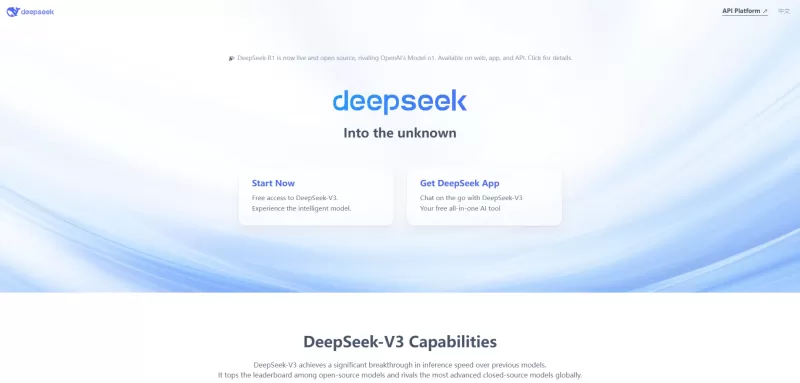Red Hat on open, small language models for responsible, practical AI
Geopolitical Influences on AI Development and Usage
As global events continue to shape our world, it's inevitable that they impact the technology sector, particularly the AI market. This influence extends to how AI is developed, its methodologies, and its application within enterprises. The current landscape of AI is a mix of excitement and skepticism, with some embracing its potential while others remain cautious due to its early stages of development.
The traditional, closed-loop large language models (LLMs) like those from well-known providers are facing competition from newer, more open models such as Llama, DeepSeek, and Baidu's Ernie X1. In contrast, open-source development offers transparency and the opportunity for community contribution, aligning with the concept of "responsible AI." This approach considers environmental impacts, usage ethics, learning data sources, and issues related to data sovereignty, language, and politics.
Red Hat, a company known for its successful open-source business model, is keen on applying its collaborative and transparent approach to AI. In a recent conversation with Julio Guijarro, Red Hat's CTO for EMEA, we discussed their strategy to harness the power of generative AI in a way that adds value to enterprises responsibly and sustainably.
The Need for Education and Transparency
Julio emphasized the need for more education around AI, pointing out that its complex nature often makes it a "black box" to many. "The inner workings of AI, deeply rooted in complex science and mathematics, remain largely unknown," he said. "This lack of transparency is exacerbated when AI is developed in closed environments."
Additional challenges include the under-representation of certain languages, data sovereignty concerns, and trust issues. Julio noted, "Data is an organization's most valuable asset, and businesses must be aware of the risks of exposing sensitive data to public platforms with varying privacy policies."
Red Hat's Approach to AI
Red Hat's response to the global demand for AI focuses on delivering benefits to end-users while addressing the doubts and limitations associated with traditional AI services. Julio highlighted the potential of small language models (SLMs) as a solution. These models can run locally or on hybrid clouds using non-specialist hardware and can access local business data. SLMs are efficient and task-specific, requiring fewer resources than LLMs.
One of the key advantages of SLMs is their ability to stay current with rapidly changing business data. "Large language models can become obsolete quickly because the data generation happens outside the big clouds, right next to your business processes," Julio explained.
Cost is another critical factor. "Customer service queries using an LLM can incur significant hidden costs," Julio said. "Before AI, data queries had a predictable scope and cost. With LLMs, each interaction can escalate costs because they operate on an iterative model. Running models on-premise allows for greater control over costs, as they're tied to your infrastructure, not per-query fees."
F fortunately, organizations don't need to invest heavily in specialized hardware like GPUs. Red Hat is working on optimizing models to run on standard hardware, focusing on the specific models businesses need rather than processing large, general-purpose data sets with every query.
The Importance of Smaller, Localized Models
By using and referencing local data, outcomes can be tailored to specific needs. Julio referenced projects in regions like the Arab- and Portuguese-speaking worlds, which are not well-served by the English-centric LLMs.
There are practical challenges with LLMs, including latency issues that can affect time-sensitive or customer-facing applications. Keeping resources and results close to the user can mitigate these problems.
Trust is another crucial aspect of responsible AI. Red Hat advocates for open platforms, tools, and models to increase transparency and allow broader community involvement. "It's critical for everyone," Julio stated. "We're building capabilities to democratize AI, not just by publishing models but by providing tools for users to replicate, tune, and serve them."
Red Hat's recent acquisition of Neural Magic aims to help enterprises scale AI more easily, improve inference performance, and offer more choices in building and deploying AI workloads through the vLLM project. Additionally, in collaboration with IBM Research, Red Hat released InstructLab, opening AI development to non-data scientists who possess valuable business knowledge.
The Future of AI
While there's much speculation about the AI bubble, Red Hat believes in a future where AI is tailored to specific use cases and remains open-source. This approach will be economically viable and accessible to all. As Matt Hicks, CEO of Red Hat, stated, "The future of AI is open."
Related article
 Learn to Build Basic AI with Wall Collision in Rec Room (2024 Guide)
Developing AI systems in Rec Room unlocks dynamic possibilities for immersive gameplay experiences. This comprehensive walkthrough demonstrates how to construct fundamental AI with collision detection, allowing your creations to interact realisticall
Learn to Build Basic AI with Wall Collision in Rec Room (2024 Guide)
Developing AI systems in Rec Room unlocks dynamic possibilities for immersive gameplay experiences. This comprehensive walkthrough demonstrates how to construct fundamental AI with collision detection, allowing your creations to interact realisticall
 Walmart Achieves Enterprise AI Scale With Unified Framework Driving Thousands of Use Cases
Walmart is pioneering enterprise-scale implementation of autonomous AI systems through an engineering-driven approach to trust architecture. Their VP of Emerging Technology Desirée Gosby revealed at VB Transform 2025 how the retail leader operational
Walmart Achieves Enterprise AI Scale With Unified Framework Driving Thousands of Use Cases
Walmart is pioneering enterprise-scale implementation of autonomous AI systems through an engineering-driven approach to trust architecture. Their VP of Emerging Technology Desirée Gosby revealed at VB Transform 2025 how the retail leader operational
 Windows Adds Support for AI App Interconnect Standard
Microsoft is doubling down on its AI strategy for Windows with two major developments: native integration of the Model Context Protocol (MCP) and the introduction of Windows AI Foundry. These foundational moves pave the way for Microsoft's vision of
Comments (13)
0/200
Windows Adds Support for AI App Interconnect Standard
Microsoft is doubling down on its AI strategy for Windows with two major developments: native integration of the Model Context Protocol (MCP) and the introduction of Windows AI Foundry. These foundational moves pave the way for Microsoft's vision of
Comments (13)
0/200
![JohnWilson]() JohnWilson
JohnWilson
 August 25, 2025 at 7:01:20 PM EDT
August 25, 2025 at 7:01:20 PM EDT
This article on small language models is super intriguing! I love how it dives into geopolitics shaping AI—makes me wonder how global policies will steer practical AI use in businesses. 🤔


 0
0
![ThomasHernández]() ThomasHernández
ThomasHernández
 August 25, 2025 at 1:00:59 AM EDT
August 25, 2025 at 1:00:59 AM EDT
This article on small language models is super intriguing! I love how it dives into practical AI solutions. Makes me wonder how enterprises will balance efficiency and ethics in AI deployment. Anyone else thinking about the real-world impact? 😄


 0
0
![AlbertScott]() AlbertScott
AlbertScott
 August 24, 2025 at 10:39:46 PM EDT
August 24, 2025 at 10:39:46 PM EDT
This article on small language models is super intriguing! 😄 I love how it dives into practical AI with a responsible twist. Makes me wonder if we'll see more companies adopt this approach to dodge ethical pitfalls.


 0
0
![WillieMartinez]() WillieMartinez
WillieMartinez
 April 26, 2025 at 3:27:01 AM EDT
April 26, 2025 at 3:27:01 AM EDT
Red Hat's focus on open, small language models is refreshing! It's great to see a company pushing for responsible AI. The practical applications are impressive, but I wish there were more examples to learn from. Still, it's a step in the right direction. Keep it up, Red Hat! 🌟


 0
0
![GregoryJones]() GregoryJones
GregoryJones
 April 26, 2025 at 2:05:13 AM EDT
April 26, 2025 at 2:05:13 AM EDT
Red Hatのオープンで小規模な言語モデルへの焦点は新鮮です!責任あるAIを推進する企業を見るのは素晴らしいです。実用的な応用は印象的ですが、学ぶための例がもっと欲しいです。それでも、正しい方向への一歩です。頑張ってください、Red Hat!🌟


 0
0
![NicholasLewis]() NicholasLewis
NicholasLewis
 April 25, 2025 at 10:40:08 PM EDT
April 25, 2025 at 10:40:08 PM EDT
A abordagem da Red Hat com modelos de linguagem pequenos para IA responsável é muito legal! É ótimo ver esforços em direção a uma IA prática que considera influências geopolíticas. No entanto, a aplicação dentro das empresas poderia ser mais detalhada. Ainda assim, um passo na direção certa! 👍


 0
0
Geopolitical Influences on AI Development and Usage
As global events continue to shape our world, it's inevitable that they impact the technology sector, particularly the AI market. This influence extends to how AI is developed, its methodologies, and its application within enterprises. The current landscape of AI is a mix of excitement and skepticism, with some embracing its potential while others remain cautious due to its early stages of development.
The traditional, closed-loop large language models (LLMs) like those from well-known providers are facing competition from newer, more open models such as Llama, DeepSeek, and Baidu's Ernie X1. In contrast, open-source development offers transparency and the opportunity for community contribution, aligning with the concept of "responsible AI." This approach considers environmental impacts, usage ethics, learning data sources, and issues related to data sovereignty, language, and politics.
Red Hat, a company known for its successful open-source business model, is keen on applying its collaborative and transparent approach to AI. In a recent conversation with Julio Guijarro, Red Hat's CTO for EMEA, we discussed their strategy to harness the power of generative AI in a way that adds value to enterprises responsibly and sustainably.
The Need for Education and Transparency
Julio emphasized the need for more education around AI, pointing out that its complex nature often makes it a "black box" to many. "The inner workings of AI, deeply rooted in complex science and mathematics, remain largely unknown," he said. "This lack of transparency is exacerbated when AI is developed in closed environments."
Additional challenges include the under-representation of certain languages, data sovereignty concerns, and trust issues. Julio noted, "Data is an organization's most valuable asset, and businesses must be aware of the risks of exposing sensitive data to public platforms with varying privacy policies."
Red Hat's Approach to AI
Red Hat's response to the global demand for AI focuses on delivering benefits to end-users while addressing the doubts and limitations associated with traditional AI services. Julio highlighted the potential of small language models (SLMs) as a solution. These models can run locally or on hybrid clouds using non-specialist hardware and can access local business data. SLMs are efficient and task-specific, requiring fewer resources than LLMs.
One of the key advantages of SLMs is their ability to stay current with rapidly changing business data. "Large language models can become obsolete quickly because the data generation happens outside the big clouds, right next to your business processes," Julio explained.
Cost is another critical factor. "Customer service queries using an LLM can incur significant hidden costs," Julio said. "Before AI, data queries had a predictable scope and cost. With LLMs, each interaction can escalate costs because they operate on an iterative model. Running models on-premise allows for greater control over costs, as they're tied to your infrastructure, not per-query fees."
F fortunately, organizations don't need to invest heavily in specialized hardware like GPUs. Red Hat is working on optimizing models to run on standard hardware, focusing on the specific models businesses need rather than processing large, general-purpose data sets with every query.
The Importance of Smaller, Localized Models
By using and referencing local data, outcomes can be tailored to specific needs. Julio referenced projects in regions like the Arab- and Portuguese-speaking worlds, which are not well-served by the English-centric LLMs.
There are practical challenges with LLMs, including latency issues that can affect time-sensitive or customer-facing applications. Keeping resources and results close to the user can mitigate these problems.
Trust is another crucial aspect of responsible AI. Red Hat advocates for open platforms, tools, and models to increase transparency and allow broader community involvement. "It's critical for everyone," Julio stated. "We're building capabilities to democratize AI, not just by publishing models but by providing tools for users to replicate, tune, and serve them."
Red Hat's recent acquisition of Neural Magic aims to help enterprises scale AI more easily, improve inference performance, and offer more choices in building and deploying AI workloads through the vLLM project. Additionally, in collaboration with IBM Research, Red Hat released InstructLab, opening AI development to non-data scientists who possess valuable business knowledge.
The Future of AI
While there's much speculation about the AI bubble, Red Hat believes in a future where AI is tailored to specific use cases and remains open-source. This approach will be economically viable and accessible to all. As Matt Hicks, CEO of Red Hat, stated, "The future of AI is open."
 Learn to Build Basic AI with Wall Collision in Rec Room (2024 Guide)
Developing AI systems in Rec Room unlocks dynamic possibilities for immersive gameplay experiences. This comprehensive walkthrough demonstrates how to construct fundamental AI with collision detection, allowing your creations to interact realisticall
Learn to Build Basic AI with Wall Collision in Rec Room (2024 Guide)
Developing AI systems in Rec Room unlocks dynamic possibilities for immersive gameplay experiences. This comprehensive walkthrough demonstrates how to construct fundamental AI with collision detection, allowing your creations to interact realisticall
 Walmart Achieves Enterprise AI Scale With Unified Framework Driving Thousands of Use Cases
Walmart is pioneering enterprise-scale implementation of autonomous AI systems through an engineering-driven approach to trust architecture. Their VP of Emerging Technology Desirée Gosby revealed at VB Transform 2025 how the retail leader operational
Walmart Achieves Enterprise AI Scale With Unified Framework Driving Thousands of Use Cases
Walmart is pioneering enterprise-scale implementation of autonomous AI systems through an engineering-driven approach to trust architecture. Their VP of Emerging Technology Desirée Gosby revealed at VB Transform 2025 how the retail leader operational
 Windows Adds Support for AI App Interconnect Standard
Microsoft is doubling down on its AI strategy for Windows with two major developments: native integration of the Model Context Protocol (MCP) and the introduction of Windows AI Foundry. These foundational moves pave the way for Microsoft's vision of
Windows Adds Support for AI App Interconnect Standard
Microsoft is doubling down on its AI strategy for Windows with two major developments: native integration of the Model Context Protocol (MCP) and the introduction of Windows AI Foundry. These foundational moves pave the way for Microsoft's vision of
 August 25, 2025 at 7:01:20 PM EDT
August 25, 2025 at 7:01:20 PM EDT
This article on small language models is super intriguing! I love how it dives into geopolitics shaping AI—makes me wonder how global policies will steer practical AI use in businesses. 🤔


 0
0
 August 25, 2025 at 1:00:59 AM EDT
August 25, 2025 at 1:00:59 AM EDT
This article on small language models is super intriguing! I love how it dives into practical AI solutions. Makes me wonder how enterprises will balance efficiency and ethics in AI deployment. Anyone else thinking about the real-world impact? 😄


 0
0
 August 24, 2025 at 10:39:46 PM EDT
August 24, 2025 at 10:39:46 PM EDT
This article on small language models is super intriguing! 😄 I love how it dives into practical AI with a responsible twist. Makes me wonder if we'll see more companies adopt this approach to dodge ethical pitfalls.


 0
0
 April 26, 2025 at 3:27:01 AM EDT
April 26, 2025 at 3:27:01 AM EDT
Red Hat's focus on open, small language models is refreshing! It's great to see a company pushing for responsible AI. The practical applications are impressive, but I wish there were more examples to learn from. Still, it's a step in the right direction. Keep it up, Red Hat! 🌟


 0
0
 April 26, 2025 at 2:05:13 AM EDT
April 26, 2025 at 2:05:13 AM EDT
Red Hatのオープンで小規模な言語モデルへの焦点は新鮮です!責任あるAIを推進する企業を見るのは素晴らしいです。実用的な応用は印象的ですが、学ぶための例がもっと欲しいです。それでも、正しい方向への一歩です。頑張ってください、Red Hat!🌟


 0
0
 April 25, 2025 at 10:40:08 PM EDT
April 25, 2025 at 10:40:08 PM EDT
A abordagem da Red Hat com modelos de linguagem pequenos para IA responsável é muito legal! É ótimo ver esforços em direção a uma IA prática que considera influências geopolíticas. No entanto, a aplicação dentro das empresas poderia ser mais detalhada. Ainda assim, um passo na direção certa! 👍


 0
0





























